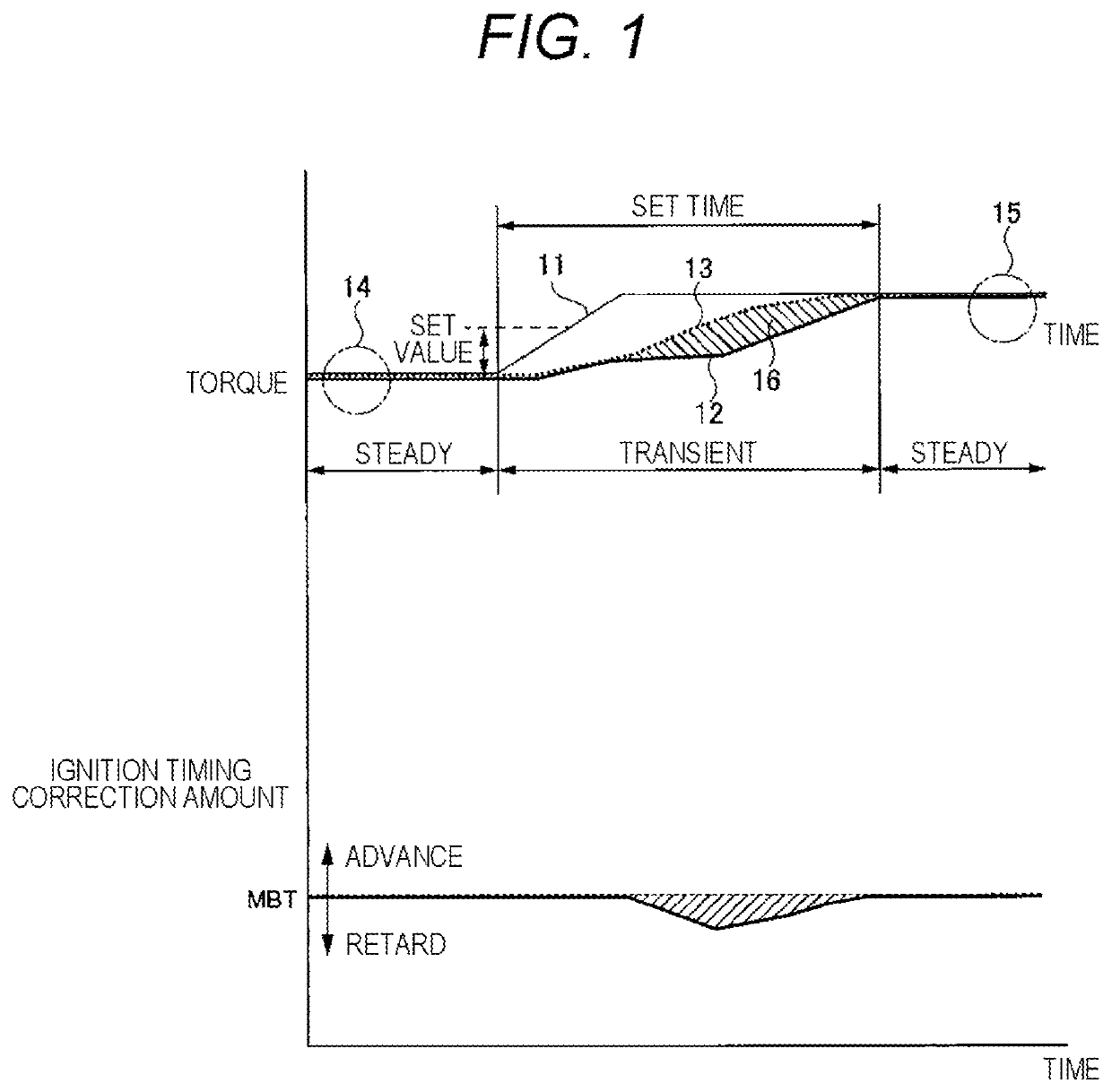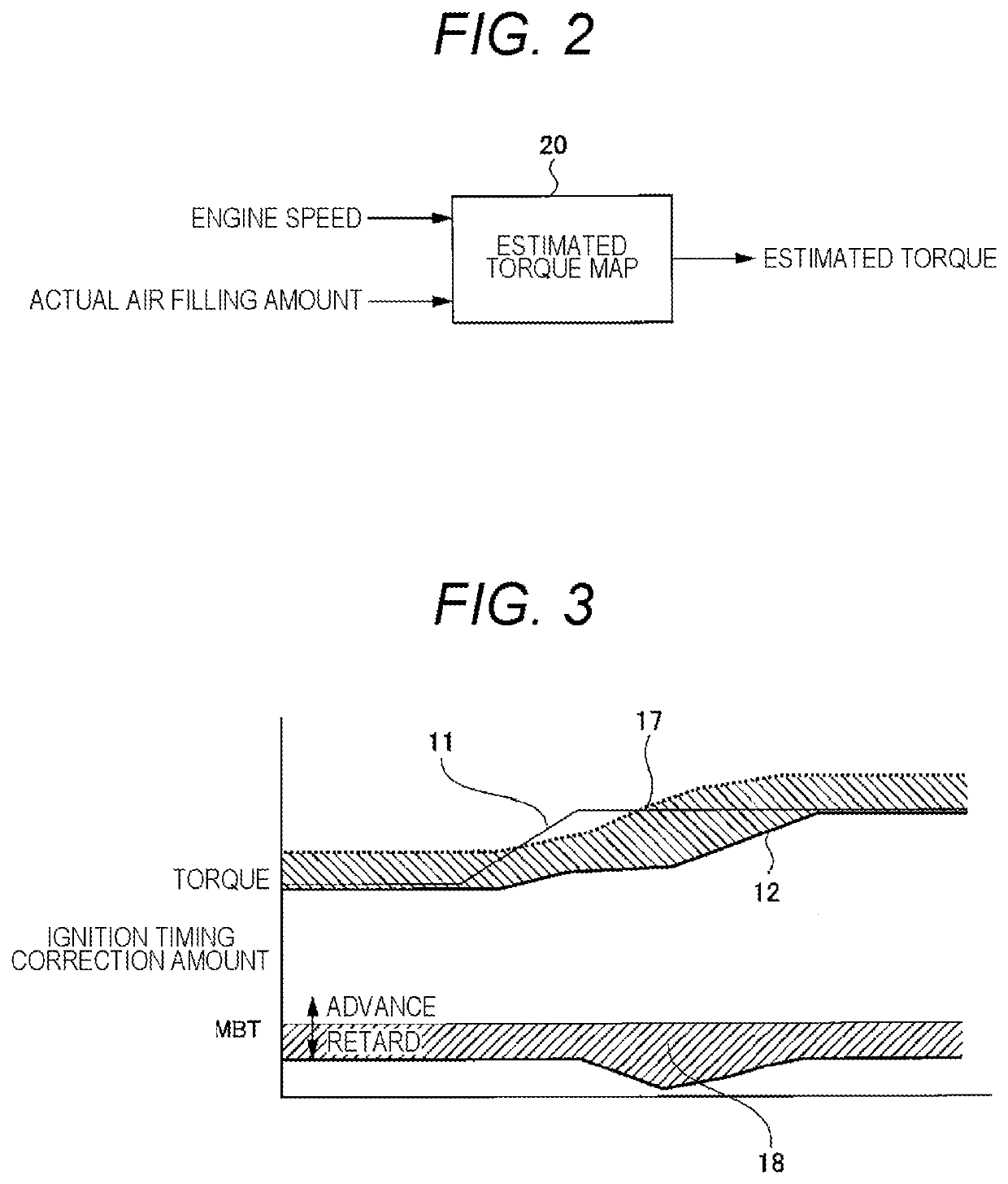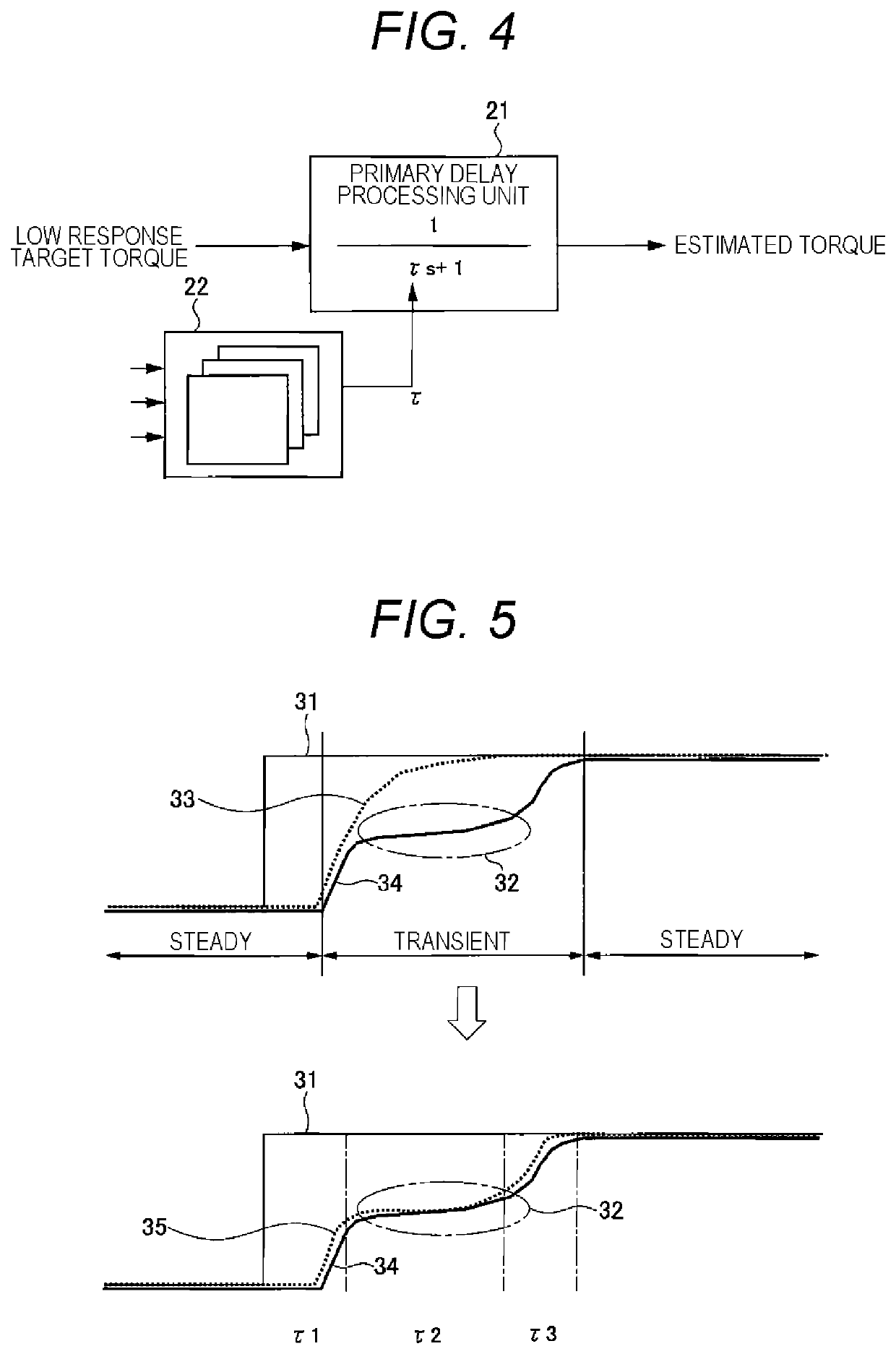Engine Control Device and Engine Control Method
- Summary
- Abstract
- Description
- Claims
- Application Information
AI Technical Summary
Benefits of technology
Problems solved by technology
Method used
Image
Examples
first embodiment
[0054]FIG. 6 is a schematic view illustrating a hardware configuration example of a torque-based engine system 1 compatible with a turbo engine to which an engine control device is applied according to a first embodiment. Hereinafter, a configuration example of the turbo engine compatible with the torque-based engine system 1 and a method of controlling an engine 10 (engine control method) will be described.
[0055]An engine 10 (an example of an internal combustion engine) is a turbocharged engine having a turbocharger 116. The engine (engine 10) performs torque-based engine control using the estimated torque. The estimated torque used in the torque-based engine control is calculated by an engine control unit (ECU) 102. An intake system of the engine 10 is provided with a compressor 117, which is a component of the turbocharger 116. An intake air compressed by the compressor 117 passes through an intake pipe 111 and is introduced to an inlet side of an electronic control throttle 107....
second embodiment
[0108]Next, a configuration example and an operation example of the estimated torque calculation unit according to the second embodiment will be described with reference to FIGS. 10 to 15.
[0109]First, an aspect in which the actual intake air amount vibrates in small steps will be described with reference to FIG. 13.
[0110]FIG. 13 is an explanatory diagram illustrating an aspect in which an actual intake air amount 321 vibrates with respect to a target intake air amount320.
[0111]In a transient state in which the actual intake air amount 321 changes toward the target intake air amount 320, the actual intake air amount 321 tends to vibrate as illustrated in FIG. 13. However, if the actual intake air amount 321 used for calculating the primary delay coefficient α is vibrating, the primary delay coefficient α may not be calculated appropriately.
[0112]In addition, the primary delay coefficient α calculated by the primary delay coefficient calculation unit 301 according to the first embodim...
third embodiment
[0146]Next, a configuration example and an operation example of an estimated torque calculation unit according to a third embodiment will be described with reference to FIGS. 16 to 19.
[0147]First, a point where the target intake air amount and the actual intake air amount are offset will be described with reference to FIG. 17.
[0148]FIG. 17 is an explanatory diagram illustrating an example in which a torque estimation error 343 occurs in a low response target torque 341 and estimated torque 342 due to an offset 333 between a target intake air amount 331 and an actual intake air amount 332.
[0149]An upper chart of FIG. 17 illustrates an aspect in which the offset 333 occurs between the target intake air amount 331 and the actual intake air amount 332. As described above, in the steady state, the target intake air amount 331 and the actual intake air amount 332 should coincide with each other. However, due to the influence of sensor error, environmental change, or the like, the offset 3...
PUM
 Login to View More
Login to View More Abstract
Description
Claims
Application Information
 Login to View More
Login to View More - R&D
- Intellectual Property
- Life Sciences
- Materials
- Tech Scout
- Unparalleled Data Quality
- Higher Quality Content
- 60% Fewer Hallucinations
Browse by: Latest US Patents, China's latest patents, Technical Efficacy Thesaurus, Application Domain, Technology Topic, Popular Technical Reports.
© 2025 PatSnap. All rights reserved.Legal|Privacy policy|Modern Slavery Act Transparency Statement|Sitemap|About US| Contact US: help@patsnap.com



